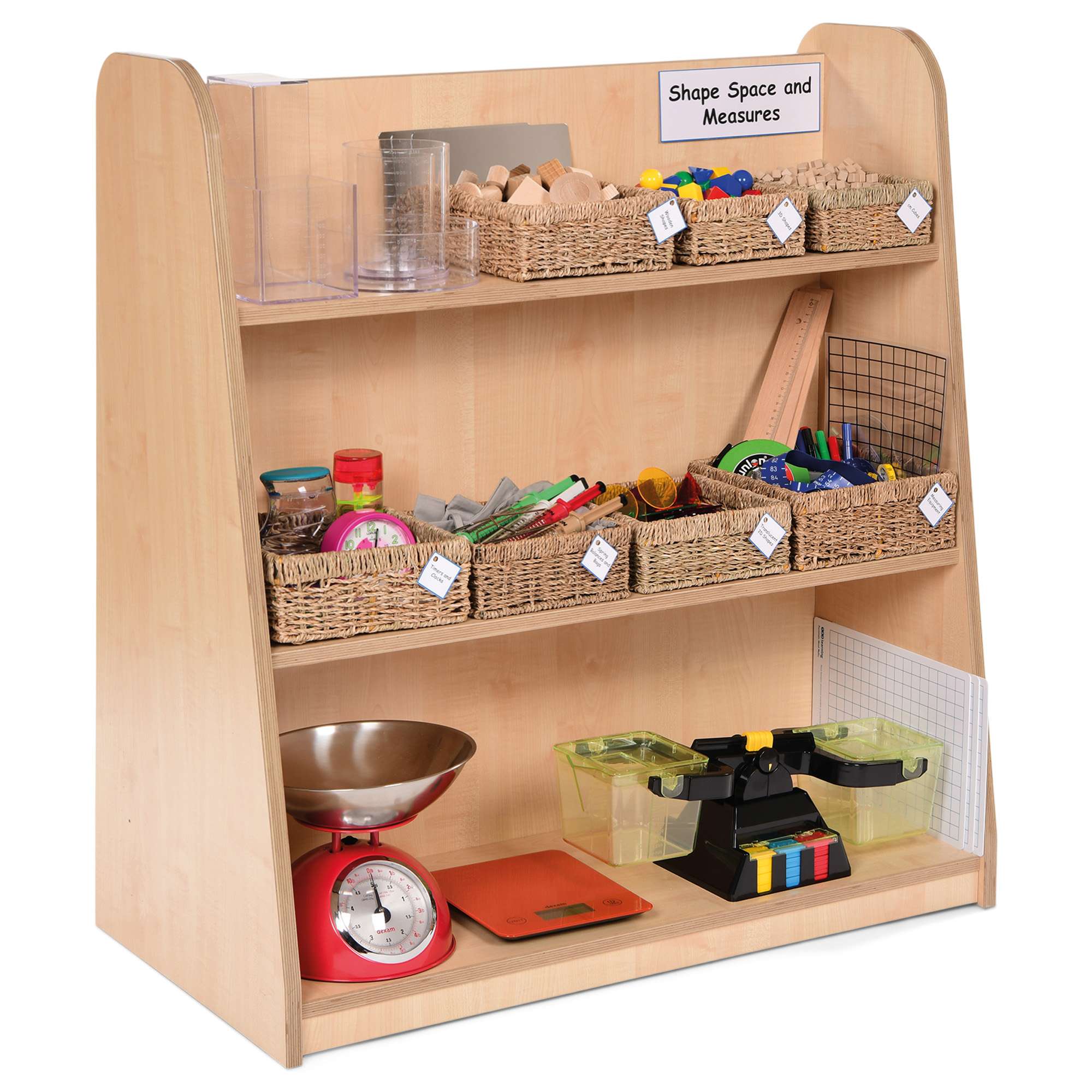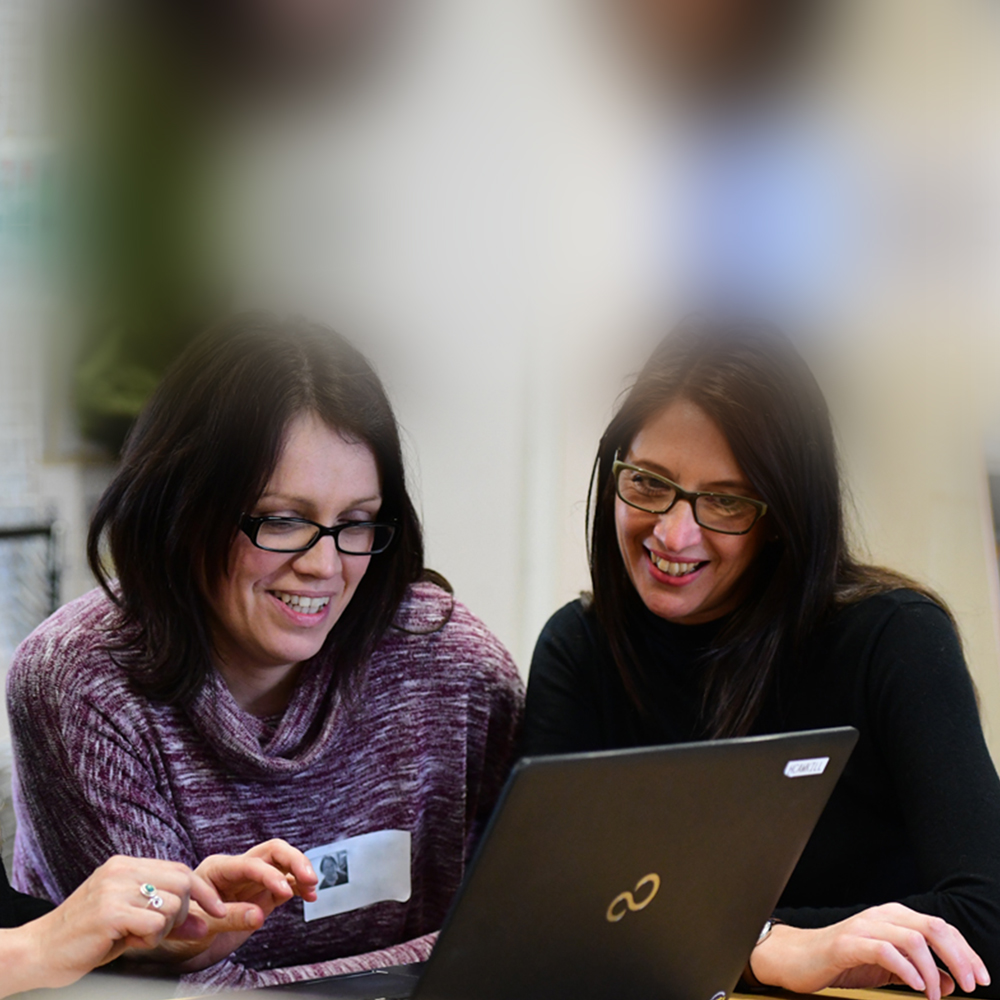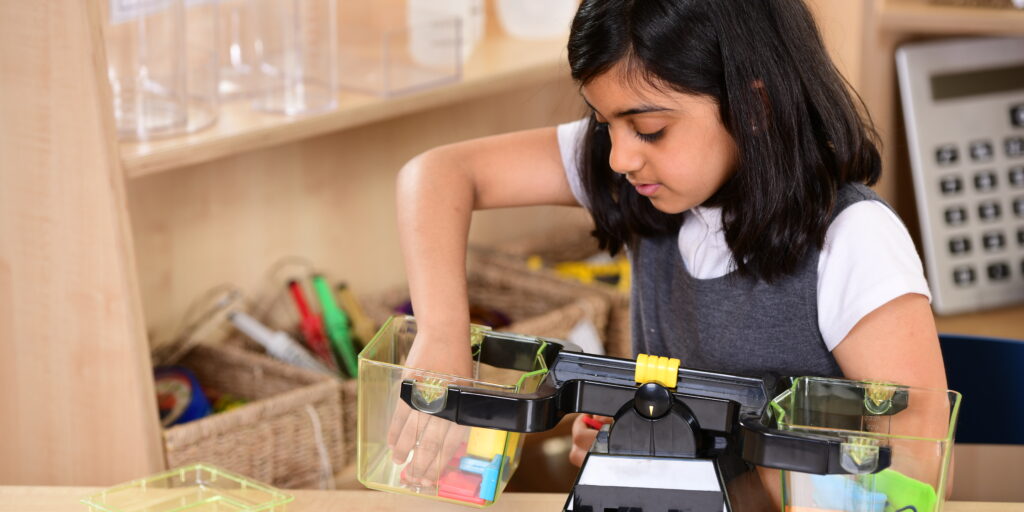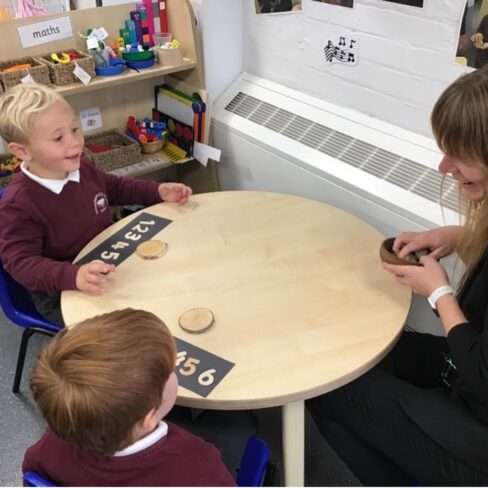Jo Berry, EYFS teacher at Thrussington Primary School in Leicestershire has explored a wealth of ways to engage young children in mathematics, and in particular, teaching children the principles of counting. In this blog, Jo shares some practical activities using concrete manipulatives that have worked effectively to engage her Reception class in developing those all-important counting skills.
Teaching children the principles of counting
One to one correspondence is an essential part of helping young children to develop their maths skills. It is the first principle of counting, and it involves matching each object to a number, counting each object once, and only once. When children are first learning to count, one to one correspondence helps them to understand that each object has a value and that the number they say represents the quantity of objects they are counting. By using one to one correspondence, children are also exposed to cardinality, which refers to the understanding of how many objects are in a count. Understanding one to one correspondence and cardinality is crucial for children to develop a strong foundation in mathematics, and activities like the one that Jo shares below can help children to practise these skills in a fun and engaging way.
Guided learning
In this activity, the teacher showed the children a bowl of pebbles, allowing them to take a good look at the pebbles before covering the bowl up. The teacher then asked the children to estimate how many pebbles were in the bowl. Allowing the children a quick look at the pebbles in the bowl before they were covered up, the children were also developing their own subitising skills – the ability to recognise the number of objects in a group without counting them. A key, and tricky part of the EYFS Early Learning Goal for Number.
Once the children had made their estimate, the teacher uncovered the bowl and the children began to count the pebbles with one to one correspondence. The teacher then encouraged the children to touch each pebble as they counted to ensure they were using one to one correspondence. As the children counted the pebbles, the teacher asked them to tell her the numeral that matched the number of pebbles they had counted. This was a great opportunity for the children to practise their numeral recognition and to make the connection between the quantity of pebbles and the corresponding numeral.
After the children finished counting, the teacher asked them to reflect on their estimate, encouraging them to think about whether they had estimated too high or too low. This was a great opportunity for the children to build connections between their estimation and the actual count, and to talk about how they could improve their estimations in the future.
Independent Investigation
One of the wonderful things about teaching young children is that they often surprise you with their creativity and their ability to take what they’ve learned and apply it in new and exciting ways. In this case, one child was so inspired by the bowl of pebbles activity that she took it upon herself to create her own maths investigation.

She went into the continuous provision maths area and selected a number of resources, including two number lines, two five-frames, and some little glass beads. She then read each numeral in turn and carefully counted out the correct number of beads to represent that numeral. By doing so, she was displaying her understanding of cardinality and her ability to count with one to one correspondence.
Once she had finished, she felt a real sense of satisfaction and accomplishment. However, she wasn’t done yet. She fetched some wooden numerals and matched these to the correct amount of beads. This showed a great deal of initiative and resourcefulness on the part of the child, and it was clear that she was thrilled with what she had learned.

As the teacher observed this child’s activity, she was struck by how much the child had internalised the
concepts of the principles of counting. By taking what she had learned in the directed activity and applying it in her own independent investigation, the child demonstrated a deep and thorough understanding of these important maths concepts.
Additionally, the child’s ability to access the resources she needed to carry out her investigation highlights the importance of carefully considering the resources available to children in the provision. By providing children with a range of resources and opportunities to explore and investigate, teachers can help children develop their maths skills independently, carry out their own ideas and build children’s confidence in mathematics.
This child-initiated activity is an ideal example of how young children can take what they’ve learned and apply it in new and exciting ways. It was clear that the child had developed a deep understanding of the principles of counting and was able to apply these skills in a creative and independent way.
Your practice
There’s lots to consider and reflect on here. The use of concrete manipulatives to support children’s early mathematical experiences, providing a maths rich environment with well-resourced continuous provision and linking your direct teaching to the provision. All really important elements to engage children in mathematics and to support independent application and mathematical thinking.
- So, have you carefully resourced your mathematics area, considering which concrete manipulatives would be of the highest value to your children’s mathematical thinking?
- How will you plan to ensure your adult-led sessions link in with children’s independent learning, motivations and interests?
Find out more

Developing a well organised Complete Maths Area is vital for supporting young children’s learning and to ensure it fully supports children’s mathematical thinking. Discover a range of EYFS & KS1 resources on our online shop.

Developing Young Mathematicians – bring your whole team together to review and develop your approach to teaching maths in EYFS & KS1. Explore the learning environment and how to ensure it fully supports children’s mathematical thinking.

Want practical ideas to develop your classroom practice? Discover the Early Excellence Inspiration Hub app – packed with expert guidance, inspiring videos, and resources for early years practitioners.


